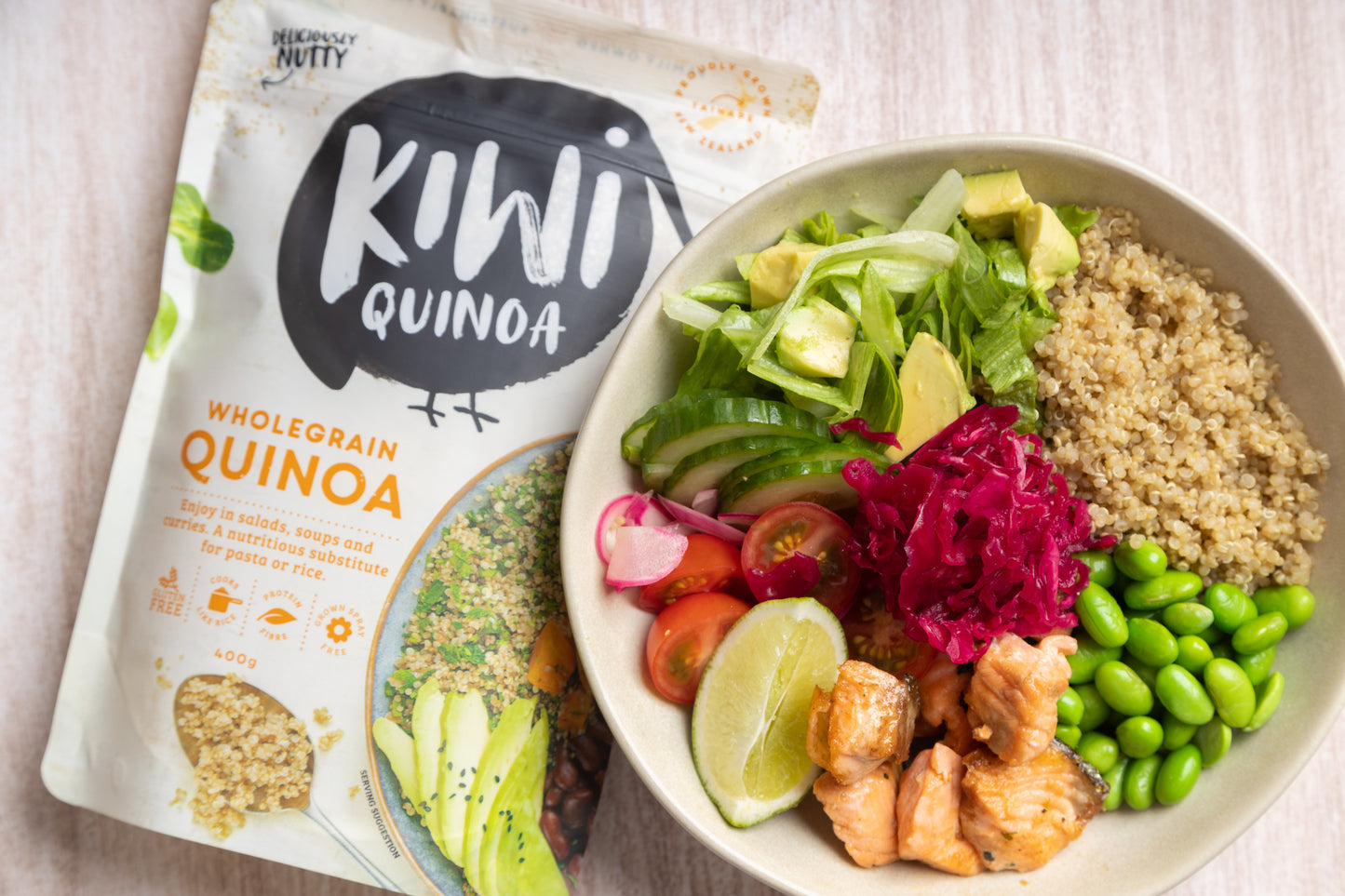
Gluten intolerance, or coeliac disease, is an autoimmune disorder that affects the small intestine. People with coeliac disease cannot consume gluten, a protein found in wheat, barley, and rye, without experiencing symptoms such as diarrhoea, bloating, and abdominal pain. The only treatment for coeliac disease is a strict gluten-free diet.
Over the past decade, there has been a significant increase in the number of people following a gluten-free diet, whether due to coeliac disease, gluten sensitivity, or personal preference. In response to this growing demand, there has been a surge in gluten-free products on the market, including those made with quinoa.
Quinoa as a Nutritious and Versatile Gluten-Free Alternative
Quinoa is a gluten-free grain that has become a popular substitute for wheat-based products in recent years. Unlike many other gluten-free alternatives, such as rice flour or cornstarch, quinoa is a complete protein that contains all nine essential amino acids. It is also high in fibre, iron, and magnesium.
One of the great things about quinoa is its versatility. It can be used in a wide range of dishes, from breakfast porridge to salads, soups, and stir-fries. Quinoa can also be ground into flour and used in baking, making it an excellent alternative to wheat flour in gluten-free recipes.
Baking with Quinoa: Tips and Tricks for Successful Gluten-Free Recipes
Baking with quinoa can be a bit tricky, as it does not contain gluten, which is essential for binding ingredients together and giving baked goods their structure. However, with a few simple tips and tricks, you can create delicious and nutritious gluten-free baked goods using quinoa flour.
Firstly, it's important to note that quinoa flour has a distinct flavour that can be slightly nutty or earthy. This flavour can be mitigated by using a blend of flours, such as rice flour or cornstarch, in your recipes. It's also important to use a binding agent, such as eggs, ground flaxseed or xanthan gum, to help give your baked goods structure.
Another helpful tip is to use a combination of baking soda and vinegar, which can help your baked goods rise and become lighter. This works particularly well in recipes that call for buttermilk or other acidic ingredients.
It's important to be patient when baking with quinoa flour. Gluten-free baked goods can take longer to cook than traditional baked goods, so be sure to test your creations frequently and adjust the cooking time as needed.
Quinoa is a nutritious and versatile gluten-free alternative that can be used in a wide range of dishes and with a bit of experimentation and some helpful tips and tricks, you can create delicious and healthy gluten-free recipes using quinoa.
The Health Benefits of a Gluten-Free Diet: Beyond Celiac Disease
A gluten-free diet has become increasingly popular in recent years, with many people choosing to eliminate gluten from their diets even if they don't have celiac disease or a diagnosed gluten intolerance. But what are the actual health benefits of a gluten-free diet?
First and foremost, a gluten-free diet can be beneficial for people with celiac disease, an autoimmune disorder in which the consumption of gluten can damage the small intestine. For these individuals, a gluten-free diet is essential for managing symptoms and preventing long-term complications.
But beyond celiac disease, some people report feeling better overall when they cut gluten from their diets. While there is limited scientific research to support the idea that a gluten-free diet is inherently healthier, some experts believe that the benefits may come from simply eating more whole, unprocessed foods, as many gluten-containing foods are often highly processed and low in nutrients.
One potential benefit of a gluten-free diet is improved gut health. Some people report experiencing less bloating, gas, and indigestion when they eliminate gluten from their diets. This may not be due to the absence of gluten itself, but also the elimination of processed foods and other dietary triggers that can cause digestive discomfort.
Another potential benefit of a gluten-free diet is weight loss. While not everyone who goes gluten-free will automatically shed pounds, eliminating gluten-containing foods may naturally lead to a reduction in calories and an increase in nutrient-dense foods like fruits, vegetables, and quality proteins.
It's important to note, however, that a gluten-free diet is not necessarily healthier than a diet that includes gluten-containing foods. In fact, some gluten-free products are highly processed and can be low in nutrients, making it important to read labels and choose whole, unprocessed foods whenever possible.
The health benefits of a gluten-free diet are still a topic of debate, with some experts advocating for its use in certain situations, such as for people with celiac disease or gluten intolerance, while others caution against unnecessarily eliminating gluten from the diet.
From Pasta to Pizza: Creative Ways to Use Quinoa in Place of Wheat-Based Products
For those who are looking to cut gluten from their diets, finding satisfying and tasty alternatives to wheat-based products can be a challenge. Luckily, quinoa is a versatile and nutritious ingredient that can be used in a wide variety of dishes, from pasta to pizza.
One of the most popular ways to use quinoa as a wheat alternative is in pasta dishes. Quinoa pasta is widely available in most grocery stores and can be used in any recipe that calls for traditional wheat-based pasta. It has a similar texture and flavour to wheat pasta, making it an easy swap for those who are used to traditional noodles.
Another great use for quinoa is as a base for pizza crust. Quinoa crust is easy to make and can be topped with all of your favourite pizza toppings. To make a quinoa crust, simply cook quinoa until it is soft and fluffy, then mix in eggs and cheese to create a dough. Spread the dough onto a baking sheet and top with sauce, cheese, and other toppings before baking in the oven.
Quinoa can also be used in place of wheat flour in baking recipes. While it can't always be used as a one-to-one replacement, quinoa flour can be used in a variety of baked goods, from cookies to breads. It has a slightly nutty flavour and adds a boost of protein and other nutrients to baked goods.
Another great way to use quinoa is in place of traditional grains in salads and grain or buddha bowls. Cooked quinoa can be mixed with a variety of salad ingredients, vegetables, nuts, quality protein, fermented foods like kraut and kim-chi and a tasty dressing and that’s a nutrient dense option for lunch and dinner. The options are endless, tasty and nourishing.
